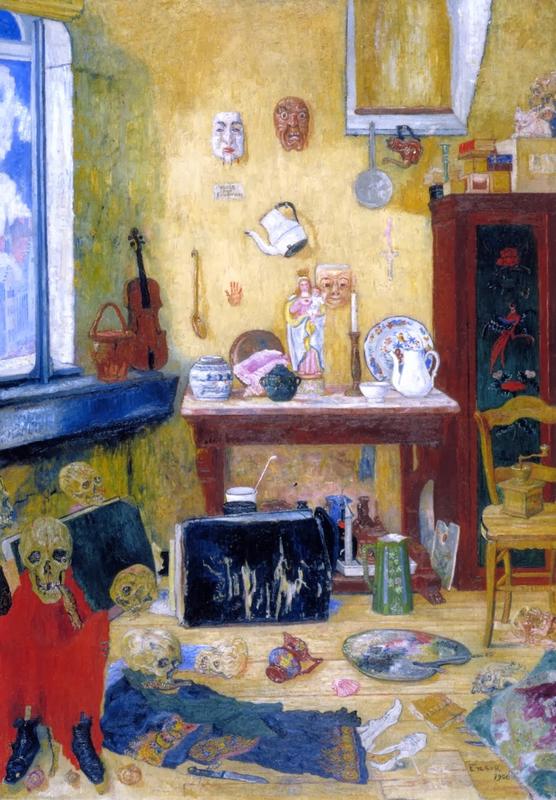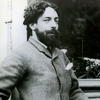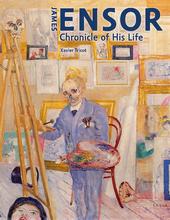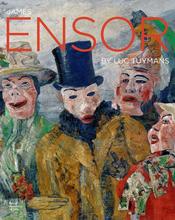More about Skeletons in the Studio
- All
- Info
- Shop

Contributor
James Ensor started finding skeletons in the studio around the time his father and grandmother died.
No, the skeletons weren’t theirs. Too fresh! In the 1880s, Ensor had proceeded to his most imaginative phase of image-making. This painting was completed at around the same time that Ensor’s career was beginning to take off, in the year 1900. People were finally beginning to sit up and take notice.
Ensor wasn’t shy about his antiquing habit. In Skeletons in the Studio, we learn a lot more about the artist than we do about his visitors from the crypt. Ensor was never one to follow a fad. Impressionism was spreading rapidly in Europe at the time. It was an epidemic. Our Belgian painter wanted nothing to do with it. He took his skulls and masks, and set up his attic studio in his childhood home in Ostende. He would proceed to create a myriad of hybrid creatures and fish monsters during this period.
Ensor didn’t exactly live in Ostende around this time. He was traveling back and forth between the seaside town and Brussels where he lived with Ernest Rousseau, a physics professor he met in Paris. James was devastated by the cruelty of the Salon circuit. That’s exactly why he had created the artist group 'Les XX.' But even they didn’t want him anymore. In 1889, when Ensor submitted Entry of Christ into Brussels, the fringe movement rejected his work. What’s funnier is that they took a vote to see if Ensor could stay. He got only one vote, his own. I know it’s awfully sad, but it’s also ridiculously funny. I mean this is like getting kicked out of a band that you started.
This painting is a collage of all the symbols that the artist employed and codified through the years. It’s like an inventory of all his imaginary belongings, the skeletons, dressed and dismantled, the masks strewn across the room, a variety of teapots and kettles, herrings, birds, weird aquatic souvenirs, and a live cat. Surely speaking to his experience getting kicked out of his own group, there's a plaque on the wall that reads “Mort aux Conformes”, or 'death to conformists.'
This painting implies a melancholy. It’s different from his other skeleton paintings. It’s still. Even the cat is still. Nothing moves. Was this a farewell? Only the skeleton clad in red is chowing down on a herring, but he freezes, as if to convince Ensor that all the conformists are dead. But they will follow him out of this frame and into the next. After all, everybody's a critic.
Sources
- Gural, Natasha. "Unmasking James Ensor." Forbes. June 19, 2013. Accessed August 01, 2019. https://www.forbes.com/2009/07/07/moma-exhibit-painting-masks-opinions-….
- "James Ensor Paintings, Bio, Ideas." The Art Story. Accessed August 01, 2019. https://www.theartstory.org/artist/ensor-james/.
- "The Religious Oeuvre of James Ensor." KMSKA. Accessed August 01, 2019. https://www.kmska.be/en/Onderzoek/Ensor/ERP_HetReligieuzeOeuvreVanJames….
- Schiff, Gert. "Annual Bulletin 4, 1980-1981." Annual Bulletin 4, James Ensor: Skeletons in the Studio by Gert Schiff. Accessed August 01, 2019. https://www.gallery.ca/bulletin/num4a/schiff1.html.













